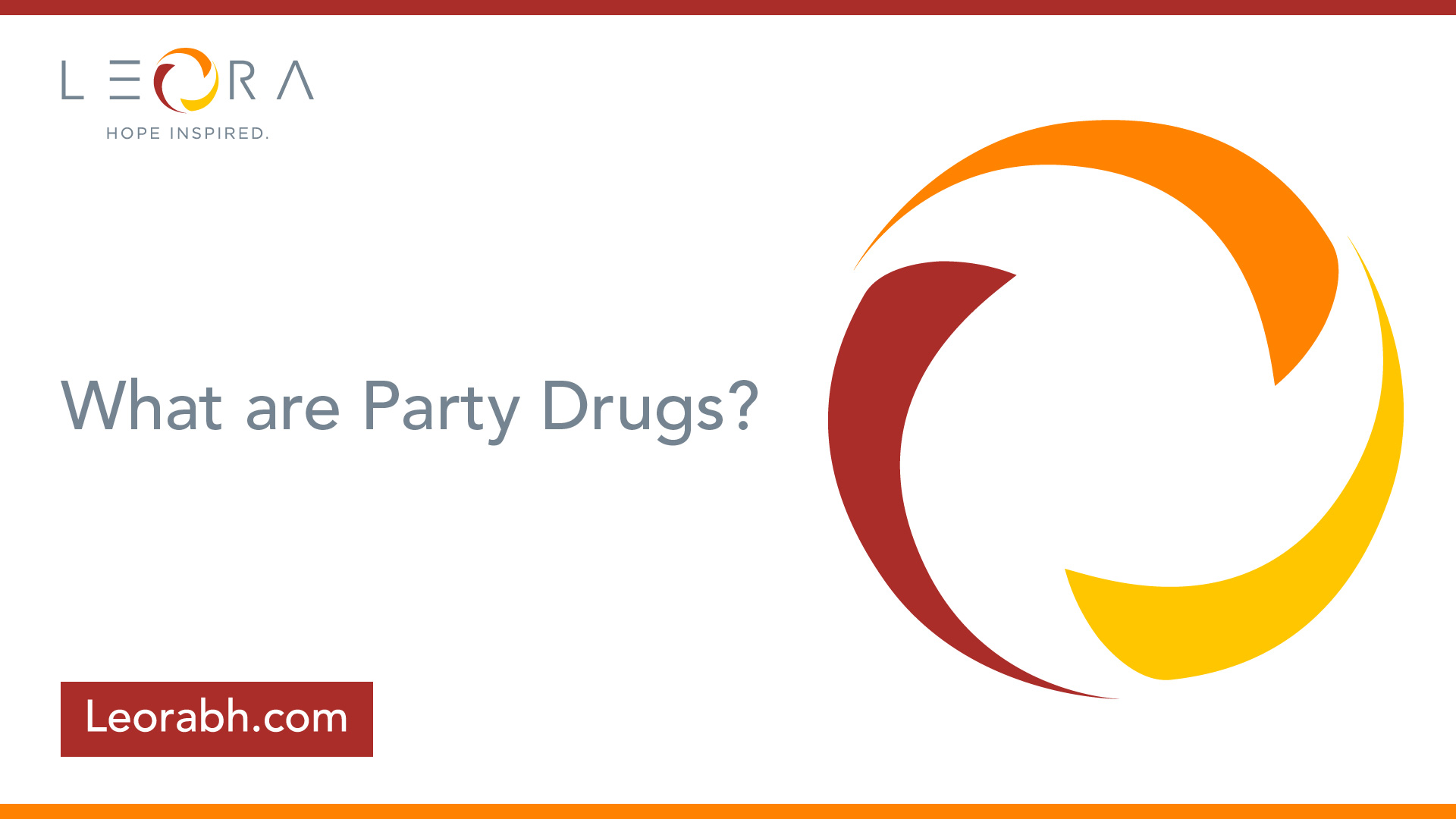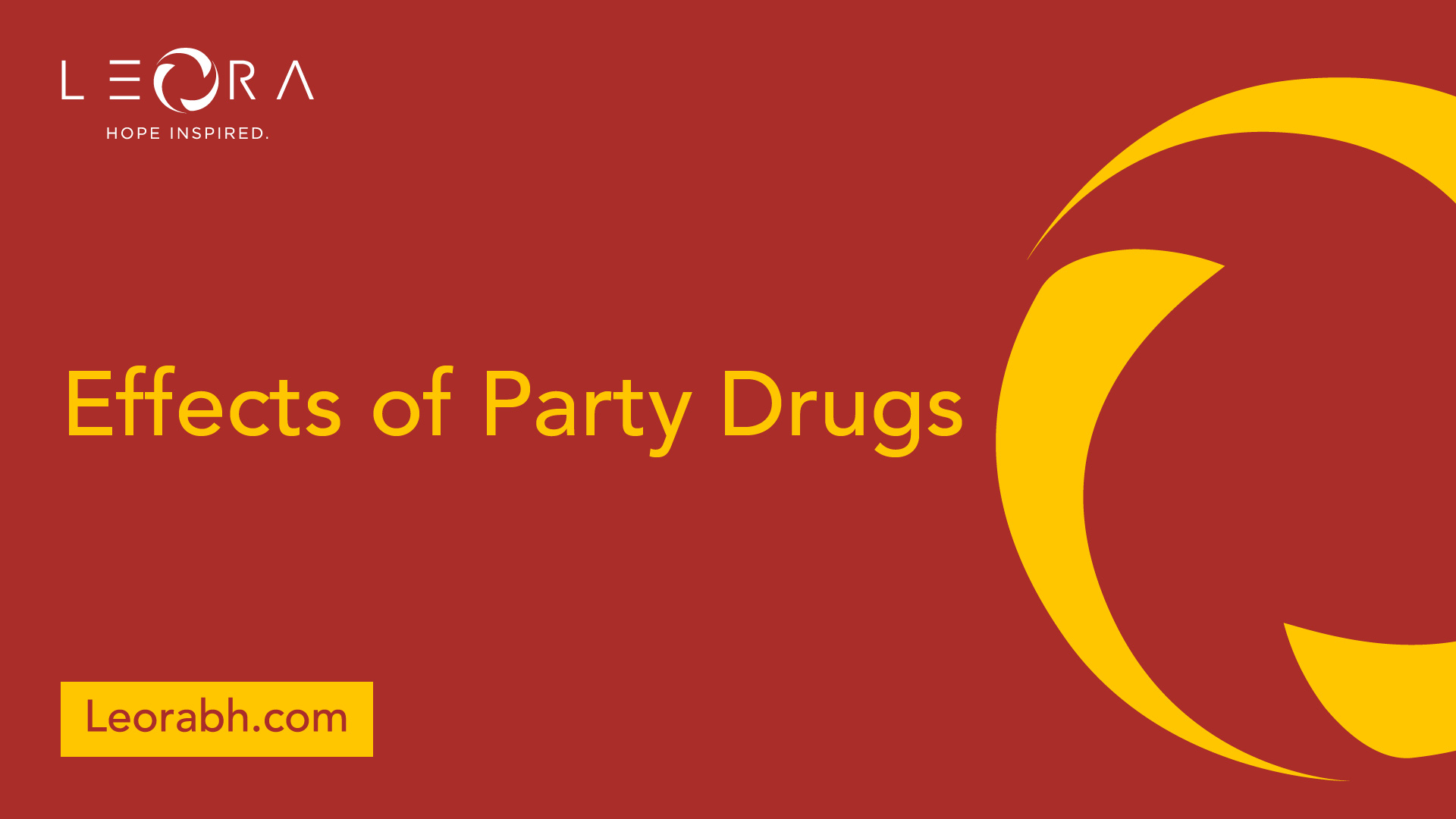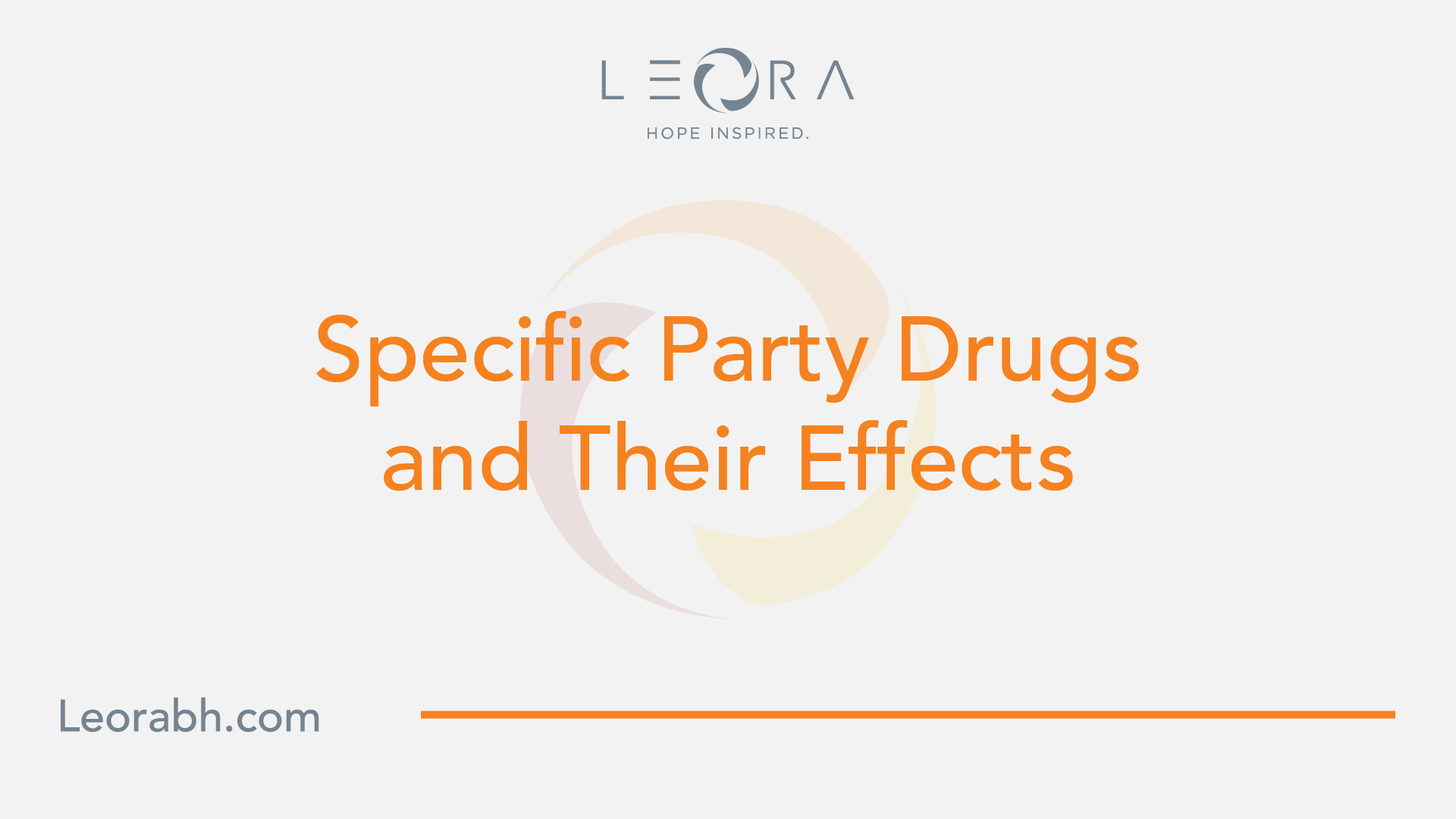What are Party Drugs?
Unveiling the dark side of party drugs: Learn what they are and their potential risks. Stay informed and stay safe.
Understanding Party Drugs
To gain a comprehensive understanding of party drugs, it is important to explore what they are and identify commonly used substances in social settings.

What are Party Drugs?
Party drugs, also known as club drugs or recreational drugs, are a group of psychoactive substances that are commonly used at social events such as parties, clubs, concerts, and music festivals. These substances are taken to enhance the overall experience of the event and to achieve certain effects. Party drugs can fall into different categories, including depressant drugs, stimulant drugs, and hallucinogen drugs [2]. Some examples of party drugs include MDMA, LSD, cocaine, methamphetamine, ketamine, and cannabis.
The popularity of party drugs stems from their ability to enhance social experiences, create feelings of euphoria, alter perception, and intensify sensory experiences. However, it is essential to note that these substances can also carry numerous risks and downsides, including potential health risks, addiction, and legal consequences.
Commonly Used Party Drugs
In social settings, there are several substances that are commonly used as party drugs. These substances can vary in their effects and risks. Some commonly used party drugs include:
Drug and Description
- MDMA (Ecstasy): MDMA is a synthetic psychoactive substance that acts as both a stimulant and a hallucinogen. It is known for producing feelings of empathy, euphoria, increased sociability, and heightened sensory experiences.
- LSD (Acid): LSD is a hallucinogenic substance that alters perception, thinking, and mood. It can induce visual hallucinations, distortions of time and space, and a sense of connection to the environment.
- Cocaine: Cocaine is a powerful stimulant that produces intense euphoria, increased energy, and heightened alertness. It is typically used in powdered form and can be snorted, injected, or smoked.
- Ketamine: Ketamine is a dissociative anesthetic that can induce hallucinations, sedation, and a trance-like state. It is commonly used as a recreational drug for its hallucinogenic effects.
These substances are just a few examples of the many party drugs that individuals may encounter in social settings. It is important to understand the effects and risks associated with each substance before considering their use.
By gaining a better understanding of what party drugs are and identifying commonly used substances, individuals can make informed decisions and be aware of the potential risks associated with their use. It is crucial to prioritize personal safety, well-being, and legal compliance when navigating social environments where party drugs may be present.

Effects of Party Drugs
Party drugs can have both short-term and long-term effects on individuals who use them. Understanding these effects is crucial in comprehending the risks associated with party drug use.
Short-Term Effects of Party Drugs
The short-term effects of party drugs can vary depending on the specific substance consumed. Some common short-term effects of party drugs include:
- Feelings of euphoria and increased energy: Drugs like MDMA (Ecstasy) can induce feelings of euphoria, increased energy, and emotional warmth, as well as distortions in sensory and time perception.
- Stimulant effects: Stimulant party drugs such as cocaine can lead to increased energy, alertness, confidence, and feelings of euphoria. However, it is important to note that cocaine use comes with a high risk of addiction and various health risks.
- Hallucinations: Hallucinogenic drugs like LSD can cause visual and auditory hallucinations, as well as an altered sense of time, space, and reality.
- Dissociation and pain relief: Ketamine, a dissociative anesthetic, can induce a trance-like state and provide pain relief. However, it can also cause hallucinations, confusion, and impaired motor function [1].
It is important to note that the short-term effects of party drugs can vary greatly depending on the individual, the dose consumed, and other factors such as the presence of other substances in the individual's system.
Long-Term Risks of Party Drug Use
Party drug use can also pose long-term risks to individuals. Some of these risks include:
- Impact on mental health: Long-term use of party drugs can have detrimental effects on mental health, potentially exacerbating existing mental illnesses or leading to the development of new ones.
- Risk of addiction: Regular use of party drugs can lead to addiction and dependence. Continued drug use despite negative consequences and an increased tolerance to the drug are common signs of addiction.
- Harm to unborn babies and breastfed children: Party drug use during pregnancy or while breastfeeding can harm the developing fetus or infant. It is crucial for pregnant individuals or those planning to conceive to avoid the use of party drugs to safeguard the health of their child.
It is important to remember that the long-term risks associated with party drug use can vary depending on the specific drug, frequency of use, and individual factors. Seeking professional help and support is essential for those struggling with party drug use to address the potential long-term risks and work towards recovery.
Understanding the effects of party drugs, both in the short-term and long-term, is crucial in making informed decisions regarding their use. It is vital to prioritize personal well-being and consider the potential risks before engaging in any substance use.

Specific Party Drugs and Their Effects
Party drugs, also known as club drugs, are substances commonly used to enhance social experiences and create feelings of euphoria at nightclubs, concerts, parties, and raves. These drugs are popular among young adults and can be accessible and affordable. Let's explore some specific party drugs and their effects.
MDMA (Ecstasy)
MDMA, commonly known as ecstasy or molly, is a popular club drug in rave, electronic dance music scenes, and nightclubs. It is taken for reasons such as enhancing the enjoyment of dancing, distorting perceptions of light, music, and touch, and inducing feelings of empathy and emotional warmth. Some users also mix MDMA with other drugs like LSD, DMT, and psilocybin mushrooms.
LSD (Acid)
LSD, also known as acid, is a hallucinogenic drug. It can cause visual and auditory hallucinations, as well as an altered sense of time, space, and reality. Users may experience intense sensory perceptions and a heightened sense of spirituality. The effects of LSD can vary greatly from person to person, and the experience is often described as a "trip" or "psychedelic journey".
Cocaine
Cocaine is a stimulant party drug that can provide increased energy, alertness, confidence, and feelings of euphoria. It stimulates the central nervous system and can lead to a sense of invincibility. However, cocaine use also comes with a high risk of addiction and various health risks, including cardiovascular problems, respiratory issues, and psychological dependence.
Ketamine
Ketamine is a dissociative anesthetic that can induce a trance-like state and provide pain relief. It is another party drug that can cause hallucinations, confusion, and impaired motor function. Ketamine's effects can range from a dreamy, floating sensation to a dissociative state known as the "K-hole." It is important to note that ketamine is primarily used for medical purposes and is subject to abuse when used recreationally.
These are just a few examples of the specific party drugs that individuals may encounter in party settings. It's important to understand the effects and risks associated with each substance before making any decisions regarding their use.
Risks and Dangers of Party Drug Use
Party drug use can expose individuals to various risks and dangers, both in terms of immediate health effects and the potential for addiction and dependence. It is important to understand these risks before engaging in the use of party drugs.
Health Risks and Side Effects
The use of party drugs carries significant health risks and can lead to a range of adverse side effects. Short-term risks associated with party drugs include serious illness or even death, with numerous cases reported each year. Drug overdose is a major concern, which can result in symptoms such as difficulty breathing and unresponsiveness, and may even lead to life-threatening side effects.
Long-term risks of using party drugs can have a detrimental impact on mental health, potentially worsening existing mental illnesses. Regular use of these drugs can also lead to addiction, making it challenging to stop using them regularly. Addiction to party drugs can have severe consequences, including worsening mental health conditions.
Addiction and Dependence
Some party drugs have a high potential for addiction and dependence. Regular use of these substances can lead to a compulsive need to continue using them, even in the face of negative consequences. Addiction to party drugs can have significant impacts on an individual's life, affecting their relationships, work, and overall well-being.
Individuals who become addicted to party drugs may require professional help and support to overcome their addiction. The process of recovery can be challenging, and it often involves a combination of medical, psychological, and social interventions. Seeking assistance from healthcare professionals and addiction specialists is crucial for individuals looking to break free from the grip of addiction.
Understanding the risks and dangers associated with party drug use is essential for making informed decisions about substance use. It is crucial to prioritize one's health and well-being, and to seek help if addiction or dependence becomes a concern. Education, prevention, and access to support services are key components of addressing the risks and dangers associated with party drug use.
Harm Reduction Strategies for Party Drug Use
To mitigate the risks associated with party drug use, implementing effective harm reduction strategies is crucial. These strategies aim to minimize the potential harm and promote safer practices among individuals who choose to use party drugs. Some of the key harm reduction strategies include providing drug information, psychosocial interventions, and emergency services and support.
Providing Drug Information
One of the fundamental components of harm reduction is providing accurate and comprehensive drug information. Education and awareness about the risks and effects of party drugs can empower individuals to make informed decisions. By understanding the potential dangers and consequences, individuals can take steps to reduce harm and make safer choices regarding drug use.
Drug information should cover various aspects, including the specific effects of different party drugs, potential interactions with other substances, dosage guidelines, and signs of overdose or adverse reactions. This knowledge equips individuals to make more informed decisions and recognize when they or others may be in need of medical assistance.
Psychosocial Interventions
Psychosocial interventions play a crucial role in addressing the underlying issues that contribute to party drug use. These interventions focus on the psychological and social aspects of drug use, aiming to support individuals in developing healthier coping mechanisms and reducing their reliance on drugs.
Counseling, therapy, and support groups are examples of psychosocial interventions that can be effective in addressing the root causes of drug use. These interventions provide a supportive and non-judgmental environment where individuals can explore their motivations for drug use, learn alternative coping strategies, and develop skills to manage cravings and triggers. By addressing the underlying factors contributing to party drug use, psychosocial interventions help individuals make positive changes in their lives.
Emergency Services and Support
Emergency services play a critical role in responding to drug-related emergencies, such as overdose or adverse reactions. It is essential for individuals to know how to access emergency services in case of a drug-related emergency. Quick medical intervention can be life-saving in such situations, and individuals should not hesitate to seek help when needed.
Support services, such as addiction treatment programs and support groups, are also crucial for individuals struggling with party drug use. These services provide a range of resources and support to help individuals overcome addiction and maintain long-term recovery. They offer a safe space for individuals to share their experiences, learn from others, and access professional guidance and assistance.
By implementing harm reduction strategies that encompass providing drug information, offering psychosocial interventions, and ensuring access to emergency services and support, we can work towards minimizing the risks associated with party drug use. It is important to prioritize the health and well-being of individuals who engage in drug use and provide them with the necessary resources and support to make informed decisions and reduce harm.
References
Find Your Inner Light
Related Articles
Contact Us
Leora Behavioral Health offers a comprehensive addiction treatment programs to help you get your life back on track.
Our trained professionals will work with you to develop a personalized treatment plan that meets your unique needs. If you or someone you know is struggling with addiction, reach out to Leora Behavioral Health today.


.svg)





.svg)
.svg)
.svg)
.svg)